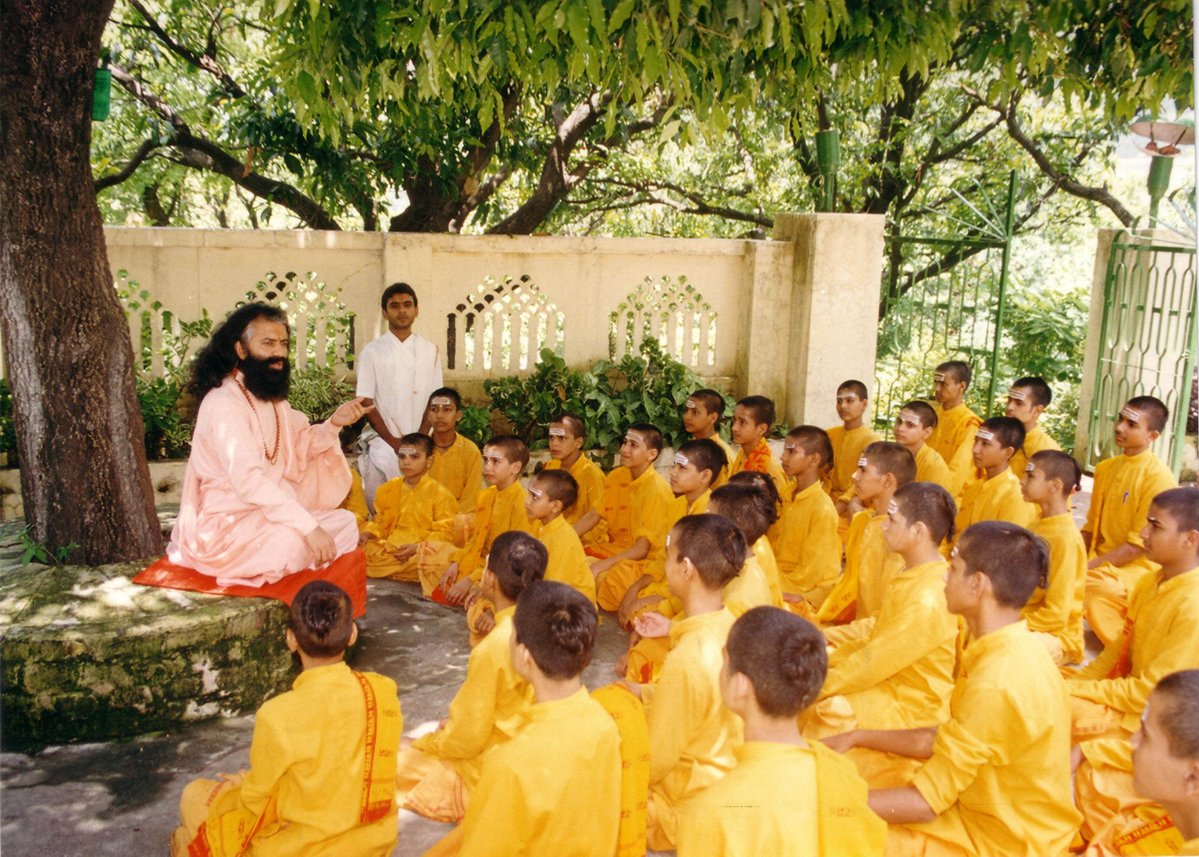Early education
Early education in India commenced under the supervision of a guru/prabhu.[1] Initially, education was open to all and seen as one of the methods to achieve Moksha in those days, or enlightenment. As time progressed, due to superiority complexes, the education was imparted on the basis of caste and the related duties that one had to perform as a member of a specific caste.[1] The Brahmans learned about scriptures and religion while the Kshatriya were educated in the various aspects of warfare.[1] The Vaishya caste learned commerce and other specific vocational courses while education was largely denied to the Shudras, the lowest caste.[1] The earliest venues of education in India were often secluded from the main population.[1] Students were expected to follow strict monastic guidelines prescribed by the guru and stay away from cities in ashrams.[2] However, as population increased under the Gupta empire centres of urban learning became increasingly common and Cities such as Varanasi and the Buddhist centre at Nalanda became increasingly visible.[2]
Education in India is a piece of education traditional form was closely related to religion.[3] Among the Heterodox schools of belief were the Jain and Buddhist schools.[4] Heterodox Buddhist education was more inclusive and aside of the monastic orders the Buddhist education centres were urban institutes of learning such as Taxila and Nalanda where grammar, medicine, philosophy, logic, metaphysics, arts and crafts etc. were also taught.[1][2] Early secular Buddhist institutions of higher learning like Taxila and Nalanda continued to function well into the common era and were attended by students from China and Central Asia.[3]
On the subject of education for the nobility Joseph Prabhu writes: "Outside the religious framework, kings and princes were educated in the arts and sciences related to government: politics (danda-nıti), economics (vartta), philosophy (anvıksiki), and historical traditions (itihasa). Here the authoritative source was Kautilya’s Arthashastra, often compared to Niccolò Machiavelli’s The Prince for its worldly outlook and political scheming."[1] The Rgveda mentions female poets called brahmavadinis, specifically Lopamudra and Ghosha.[5] By 800 BCE women such as Gargi and Maitreyi were mentioned as scholars in the religious Upnishads.[5] Maya, mother of the historic Buddha, was an educated queen while other women in India contributed to writing of the Pali canon.[5] Out of the composers of the Sangam literature 154 were women.[6] However, the education and society of the era continued to be dominated by educated male population